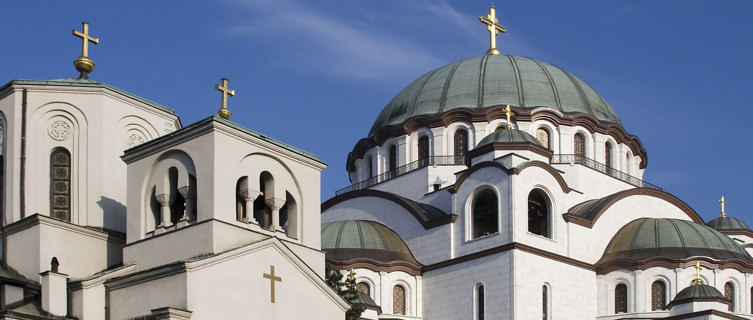
Belgrade travel guide
Belgrade is fast building a reputation as a city that really knows how to enjoy itself, with excellent museums, a vast selection of restaurants and cafés, and probably the best nightlife in southeast Europe. Modern-day Serbia has worked hard to put the torrid 1990s behind it, with most visitors speaking warmly of the friendliness and generosity of Belgradians.
The Serbian capital is often described as ugly, but that all depends on your taste – with countless different rulers over the centuries, there’s something for everyone. New Belgrade on the western side of the Sava is dominated by striking Soviet-era buildings, as is the commercial centre across the river on the eastern side.
There are also many impressive neoclassical buildings from 19th century and some later art nouveau architecture towering over grand boulevards in the city centre. Meanwhile, on narrow pedestrianised streets, you’ll find some remnants of the Ottoman era.
Overlooking the convergence of the mighty rivers Danube and Sava is the stunning fortress of Kalemegdan, set within a large and pleasant park that rises into a sheer hill. The battlements were built to defend the city from the Ottomans, only to be captured and used by the invaders themselves.
This diverse, colourful past is partly what makes Belgrade so interesting. Look out for mighty Orthodox churches, especially the pristine-white Cathedral of St Sava and its 4,000-tonne dome, which took 80 years to construct. Also expect shisha bars, Turkish coffee and hearty Balkan food alongside an intense drinking culture.
Indeed, Belgrade is a thriving cultural hub, with a slew of terrific museums and galleries. The Museum of Applied Arts puts on topical exhibitions, while the National Museum in Belgrade hosts extraordinary collections of art and artefacts.
As for grassroots art spots, the city is blessed with dozens, particularly in Savamala by the river. Covered in graffiti, the edgy district’s once-abandoned and derelict buildings have been converted into all-purpose cultural centres and bars. In fact, this is the coolest nightlife area of the city, with its atmosphere of reclamation and creativity explaining why Belgrade is being dubbed the new Berlin.
Do you have any Feedback about this page?
© 2025 Columbus Travel Media Ltd. All rights reserved. No part of this site may be reproduced without our written permission, click here for information on Columbus Content Solutions.








 You know where
You know where